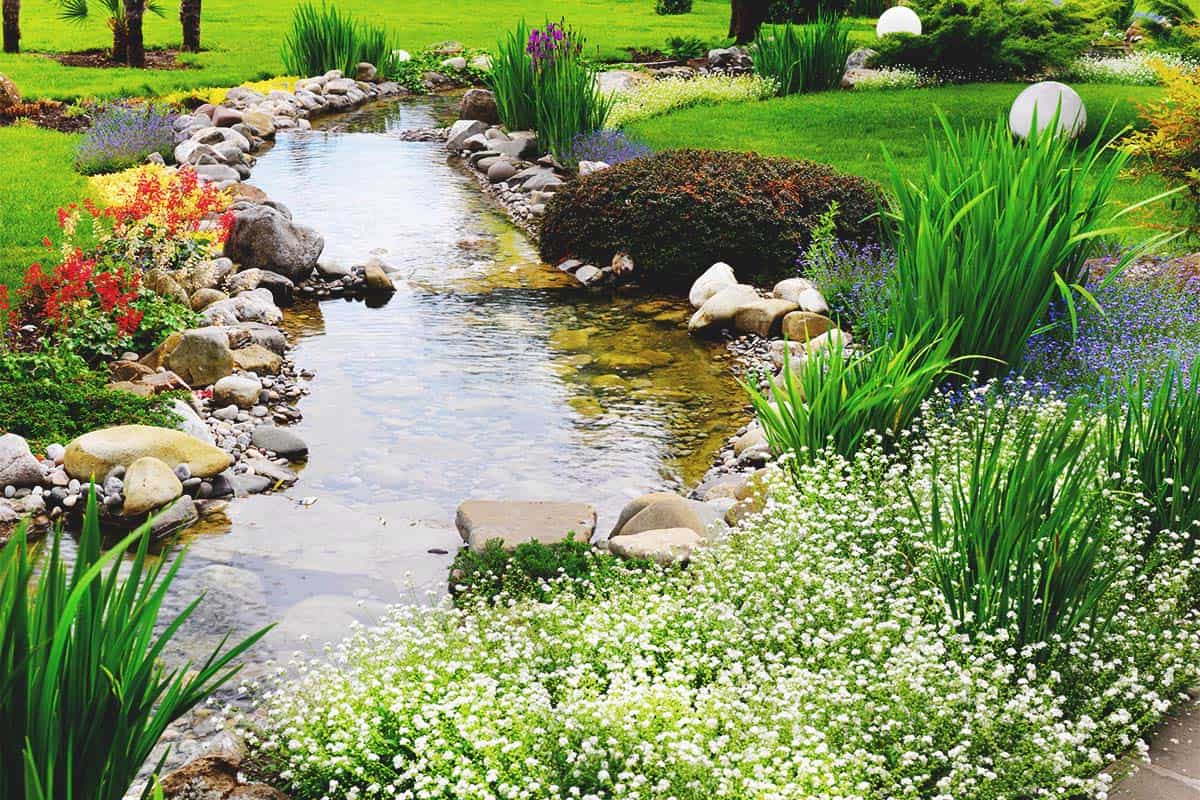
-
By:
- admin
- No comment
- Tags: DiY, Garden ideas, Home and gardening, How to build a pond, How to build a water garden, Landscaping
How to Build a DIY Water Garden in Your Yard
This article was originally published by Amanda Pieper on www.morningchores.com
Make sure you like Best-DiY on Facebook to be updated every time we find an interesting article for you.
Is there anything more zen than a lovely water source, outlined with aquatic plants? Water gardens are gaining popularity amongst both homesteaders and those with small yards looking to add an element of nature to their property.
But isn’t a water garden just a pond? You might ask…well, not exactly, read on to learn more:
The Difference Between a Water Garden and A Pond
While it’s often debated, a water garden is not the same as a pond. The main difference is usually the size with water gardens often being smaller than a regular pond.
Those who create and nurture their own water gardens will tell you a lot more time and planning goes into the aesthetic of a water garden than it does a pond.
Plus maintenance is much more extensive throughout the year.
An additional feature is that water gardens can be found inside homes, in small spaces or containers, and not just amongst the landscaping outdoors.
The balanced ecosystem of a water garden is usually extremely important to keep its plants, and fish if applicable, happy and healthy.
What to Consider When Planning A Water Garden

Water gardens can be finicky, especially if they are extremely small. Most water gardens aren’t extremely expansive, thus, they can easily become cesspools of bacteria and algae if not planned carefully before installation.
Water gardens do best when they are balanced ecologically. And that means they need four things in order to thrive and not turn into a pond of goo:
- Plants
- Fish
- Sunlight
- Aeration (not necessarily manual)
Let’s break each of these down a bit:
1. Aquatic Plants
Plants that thrive in water either grow with their roots submerged and the rest above the water, or they grow completely underwater.
Both types of water plants provide oxygen and shade which benefits the entire ecosystem of the water garden (including the fish).
2. Fresh Water Fish
Fish are important for algae control and to prevent your water garden from becoming a mosquito nursery. They feed off the algae and their waste acts as fertilizer for your aquatic plants. It’s a beautiful little self-sufficient world all on its own.
3. Sunlight
Obviously, your plants need the sun to survive, but the amount of sun your water garden gets also determines how much algae you’ll have, and also how many fish you need to stock.
Sun not only promotes the growth of your chosen water plants but also algae.
4. Aeration
If you have fish, you need to ensure that they have oxygen. You can do this with the proper balance of plants and fish, but another way to make sure you are aerating your water garden is with a pond pump.
Keep in mind that many aquatic plants prefer calm waters, so if you do use a waterfall or a pump, make sure there are calm areas for these chilled-out plants.
Bonus: Aquatic Snails
In addition to fish, snails are fantastic foragers of dead things. They feast on dead plants and unsightly and suffocating algae. Adding a water snail or 12 will only add positive vibes to your ecosystem.
Constructing Your Water Garden

Creating a beautiful water garden isn’t as difficult as you may think. There’s just a handful of steps to take that can be broken up over the course of a few days.
Ready?
Step One: Plan The Size and Shape of Your Garden
When planning the size, also consider how deep your water garden should be. If you plan to stock it with fish, it should be at least two feet deep.
Stake out your pond shape and get to digging. Your garden can have a gradual slope if it’s large enough.
Some plants enjoy shallow areas, while others thrive in the deepest darkest depths of the water. A variety of slopes and depths is perfectly fine. Feel free to get creative.
Step Two: Lay the Foundation
If you are using an old barrel or lining, for example, this is when you install it as the foundation your little ecosystem will live upon.
Remember, anything planted on the bottom of your water garden will need nutrients (in soil and within the garden) to grow, so plan accordingly and don’t assume your submerged plants will grow on a plastic lining, for example.
Step Three: Add Sand, Soil, and Water
Cover your foundation, and the hole you’ve dug, with a layer of sand, and soil. You can also add newspapers to promote organic growth through composting.
Then, slowly fill your water garden with water.
Step Four: Install an Overflow System
To prevent your garden from overflowing during rainstorms, use a small PVC pipe. Install the opening of the PVC pipe just above your desired water level. The other end of the pipe should direct any overflow away from the garden.
Step Five: Wait
Wait a few days for it to warm to the natural temperature before you add any plants or fish. This also allows for a distillation period in case your water has been treated with chlorine or other chemicals.
Step Six: Stock Your Garden
Now is the time to add your chosen aquatic plants. Do this before you add fish to prevent a disturbance in soil and water. Your plants should be well-established before you introduce any fish to your garden.
What’s left? Sit back with a cup of your favorite beverage and zen out to your nature-inspired installation.
Make sure you like Best-DiY on Facebook to be updated every time we find an interesting article for you.




